The Captain goes in search of a fuel tank for the Nub Tub, their custom Haines Hunter 445F project boat. In the backblocks of Williamstown they find a man of steel, Kane McQuarrie from McQuarrie Fabrications.
Picking a fuel tank is harder than picking a good rum. For starters, some models sit above the floor – usually plastic and removable – and some tanks are designed to fit permanently below the floor. There are shiny off-the-rack models found at stores like Whitworths and custom-built jobbies built in the suburbs by hardworking blokes in dark hoodies. There are other questions, such as, “How many litres should we run?” Less than 100 litres and we’re gonna need spare jerries to get to the shelf and back. Then there’s the build material. Options include stainless, aluminium, plastic, copper and even fibreglass. Every expert we’ve consulted has had a different expert opinion.
Now the floor has been ground back and we’ve arrived at a bare hull, we have the option of an underfloor tank. Several wise souls say there’ll be no room under the floor, so don’t bother. Others say it’s just a 4.5m boat with a frugal 100HP Suzuki, so you won’t need it. We have other ideas. After closely watching the build of rigs like Jesse Hayman’s V19 console, we know we need an underfloor tank.
STEELY MAN
After bugging the experts, we came to the conclusion that the building material was less important than the builder. So we went with Kane McQuarrie from McQuarrie Fabrications. Stainless is his thing. To prove it, he’s got steel piercings through both eyebrows and his chin. He’s the artist responsible for the stainless work on many of the fine ships featured in The Captain, including Ziad Mesto’s Cam Strachan Formula, Matt Webb’s Edencraft Formula, the Cefai boys’ Haines Hunter 760R, Harry Foullas’ Formula and Joel Ryan’s Offshore just to name a few.
We rang Kane, told him The Captain’s plight and he jumped on board straight away. Fortunately for us, he’d just cut his ties with one of the major ’glass manufacturers. According to Kane, the big boys don’t like it when you post photos on Facebook about rebuilding floors in hulls with their name emblazoned on the side.
After a brief but spiteful Facebook war, Kane is now 100 per cent focused on customised rigs so he can have a direct relationship with his customer. He says the best thing is seeing the smile on the owner’s face when their shiny rig rolls out the door – or when he sees them on Facebook catching fish, diving and showing off their boats.
“I’d rather do customised work on bigger boats,” Kane says. “You get more satisfaction out of it. Instead of making one person that runs the company happy, I get to see everyone happy.”
Kane’s HQ is around the back of his parents’ fibreglass factory in Williamstown, Melbourne. A pirate’s treasure trove of cool rigs sit on the factory floor and in the driveway, including V19s in various stages of build, a new AB-CAT based on the 18ft Shark Cat that’s getting a commercial fit-out, a fully rebuilt V17 with a sweet flatback transom, a Bass Strait Offshore getting some extra bling and even a Malibu Wakesetter. There are also a couple of custom-built Harleys featuring his handiwork, and a motocross bike or two. Did I mention the tip truck and Bobcat Kane uses to build motocross tracks at his farm on the weekend?
The tank starts as a 1.6mm flat sheet of 316 stainless. It’s folded in four sections with a lip on top for the final sheet. Three baffles are fitted along the internals, designed to slow down the sloshing of fuel when underway. A pick-up and breather are added, plus a filler, then the ends are TIG welded in. Kane works methodically, like a dentist, never rushing despite the endless procession of mates and customers who pop in to check on his latest metallic masterpiece. Not even Zed, his fearsome black rottweiler chained at the front door, can keep the punters away. Richmond midfielder Bachar Houli swings by to check out the tank being made for his Haines V17. Unfortunately for Bachar, The Captain’s crew is playing out in front – their tank is finished and getting polished like a premiership trophy while his is still in pieces on the bench.
After a day of cutting, folding, TIG welding and fitting, the tank is acid-washed in pickle paste and ready for pressure testing. The vents are sealed and soapy water is applied to every seam and weld. Air pressure is fed in through the breather and Kane studies his workmanship to ensure no air is escaping. Once tested, it’s handshakes all round, and The Captain’s crew head up the coast to become reacquainted with the Nub Tub at Cann River. Better get a slab of Coopers Pale Ale, methinks.
STAINLESS STEEL VS ALLOY
We quickly get the impression that Kane is a bloke who gets shit done and that his assortment of machines are seldom idle – definitely the man to build The Captain a long-lasting tank. He says he’s never had a stainless tank come back in 15 years, pointing to a pile of chalky, pitted aluminium tanks, some not more than two years old. We ask if it’s an alloy thing, but he reckons there’s just good and bad workmanship. In his experience, a well-built stainless tank will stand the test of time. Kane is well practised, building three to five tanks per week. About the perception that stainless is prone to cracking, he says, “if it’s built right, folded, TIG welded and tested, it’ll do the job.” The weight of stainless was a consideration for The Captain’s crew, but it was easy to justify ballast down low and in the guts of the Nub Tub.
THE LITRE METER
455km away in Cann River, Erick Hyland from WhitePointer Marine is taking time out from laying up another 263 to measure the internals of the 445. In a moment of weakness, he offered to fit a pair of full-length fibreglass box section stringers (pictured above). These are the same type he fits to the 5m Super Hornet (which are a smaller version of the stringers used on the 263 goliath). The tank will lie on a sheet of Thermolite between the stringers. After a spot of finetuning, Erick comes back with the measurements. We’d have 117 litres to play with under the floor. Erick shoots the measurements through to Kane and in no time, the most publicised fuel tank in the history of 445F boats is under construction.

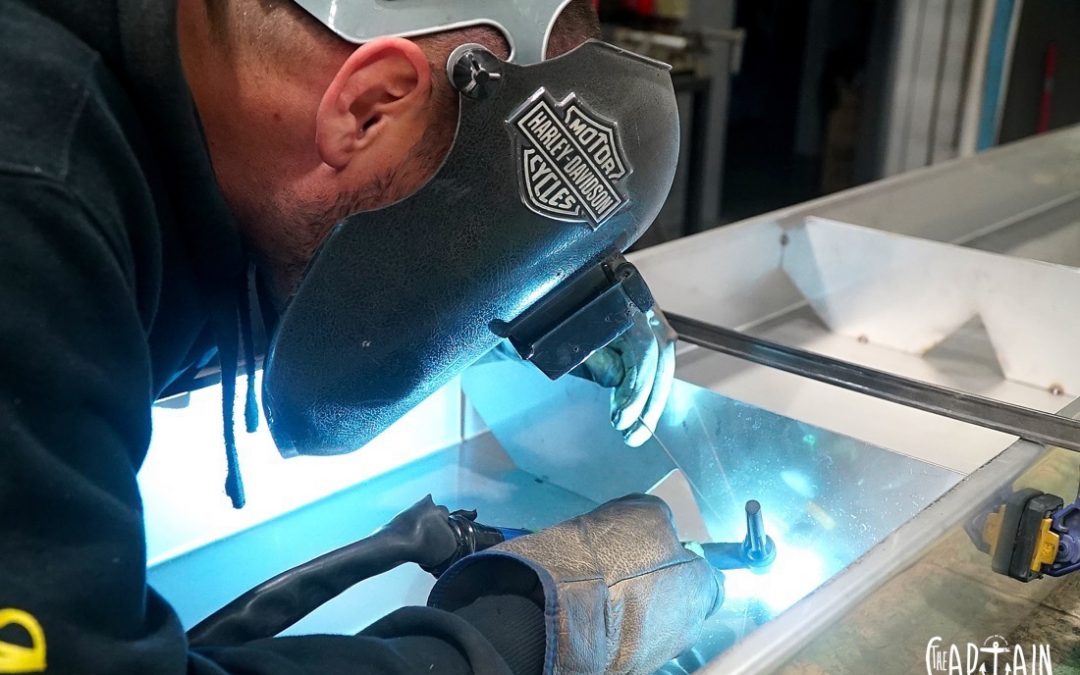
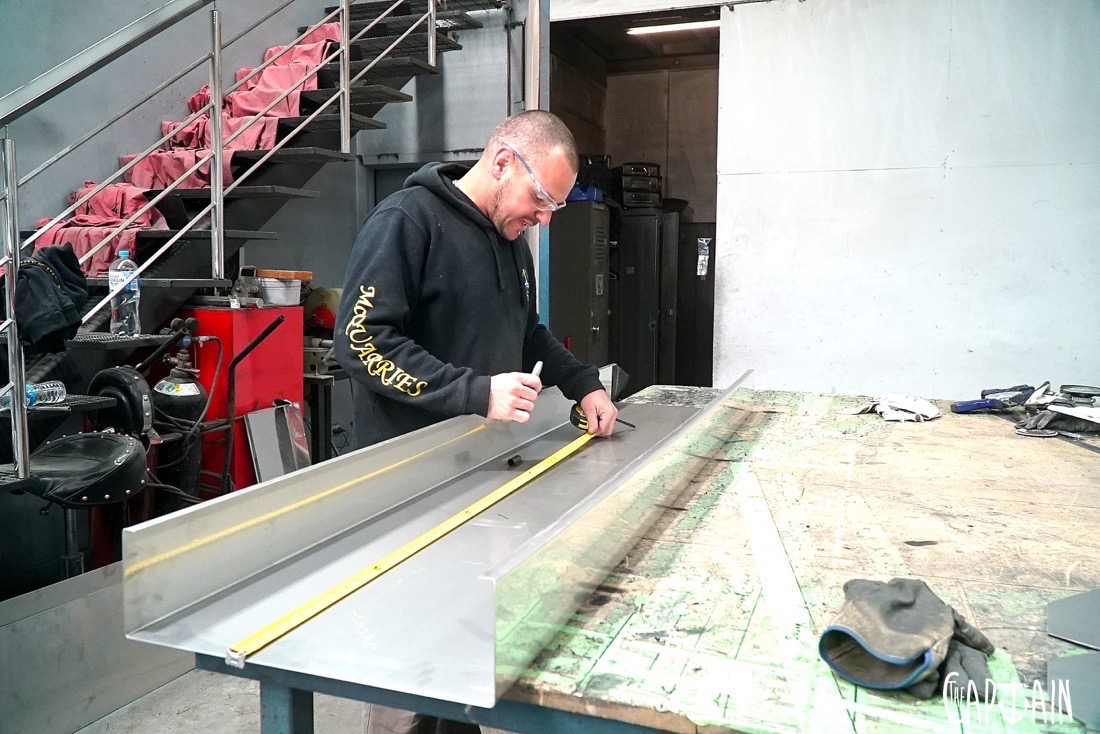
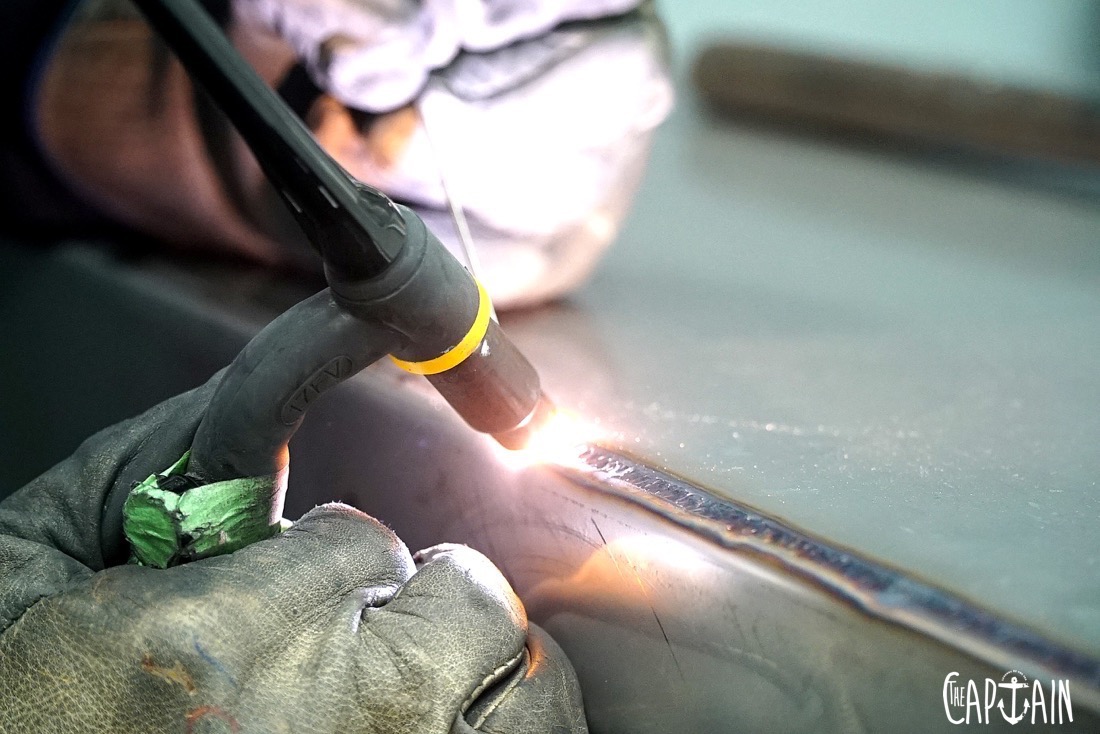

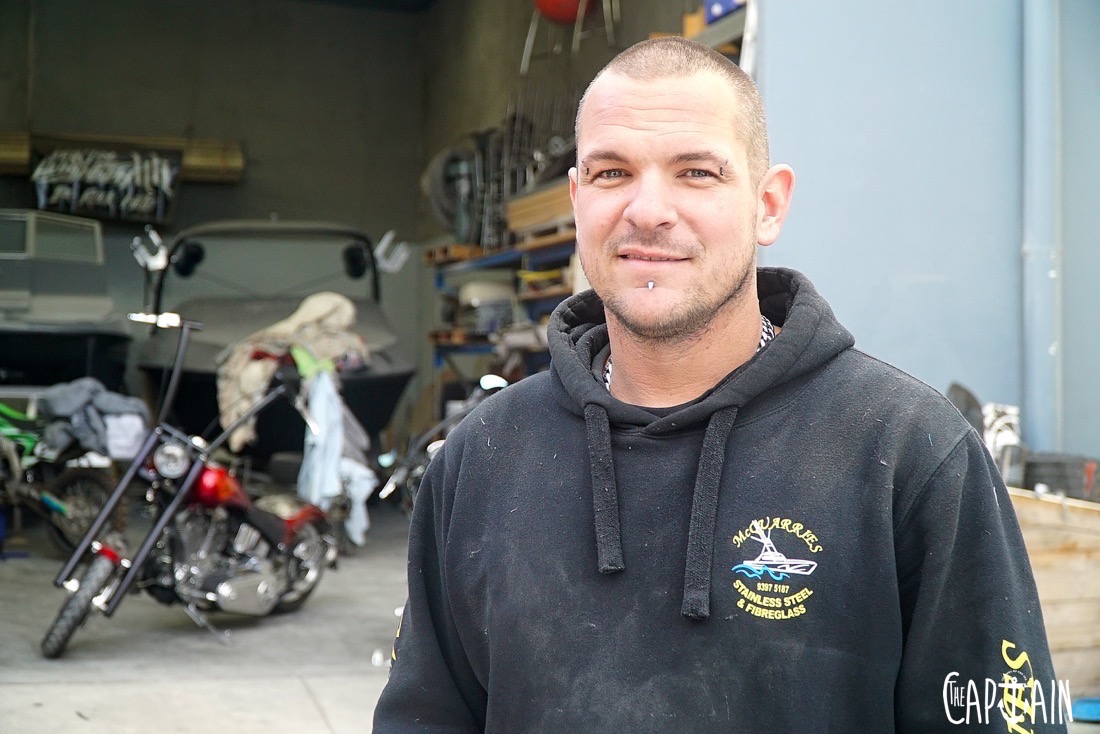
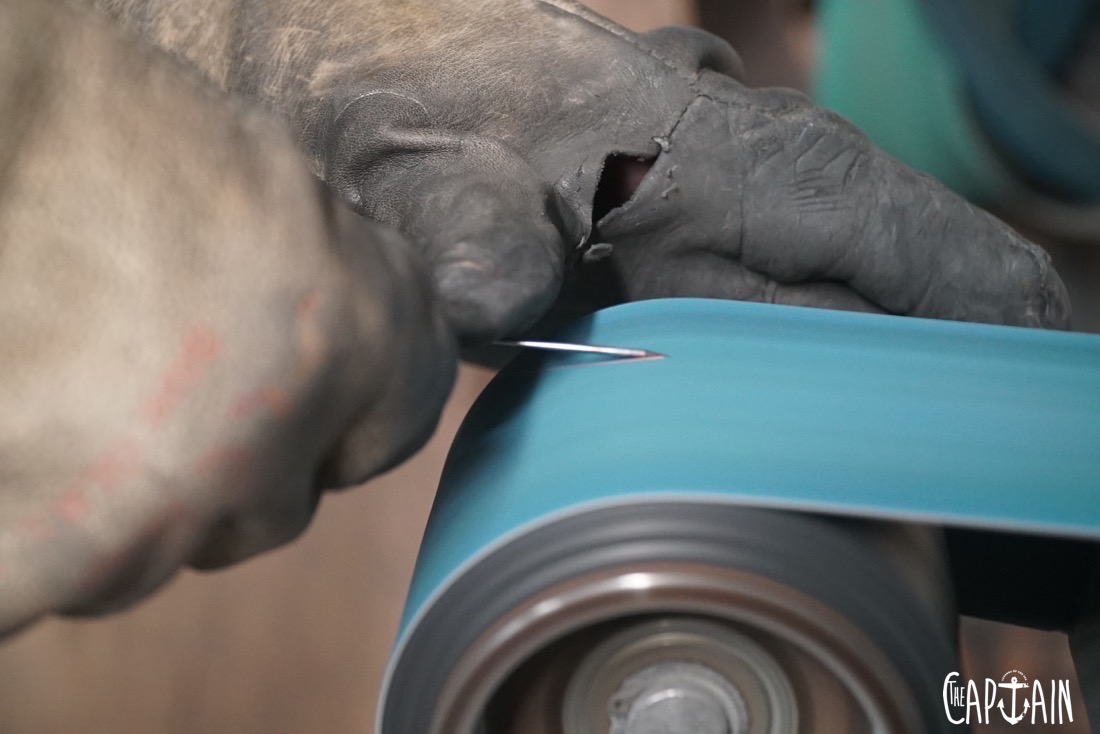
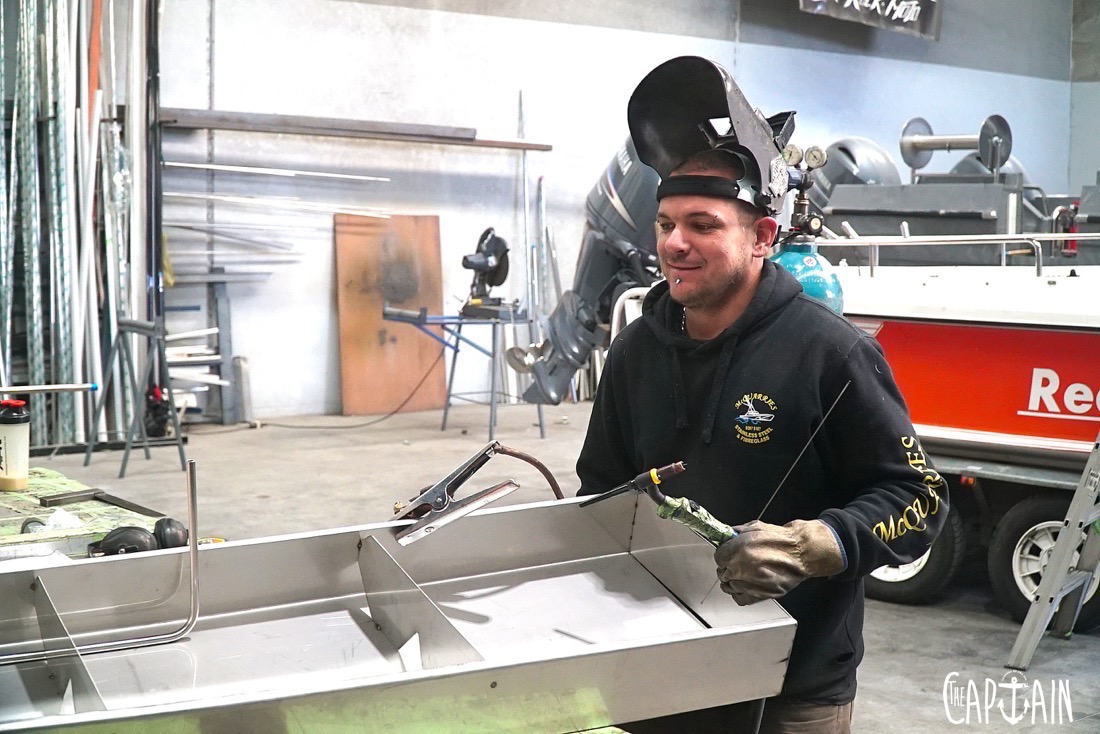


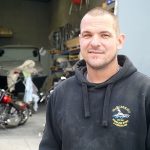
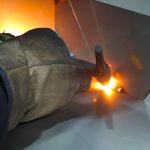
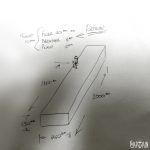

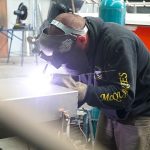
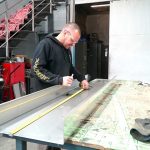
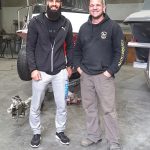
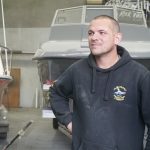
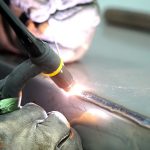
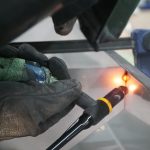
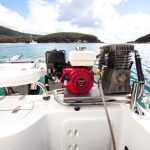
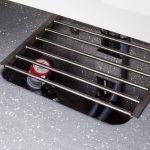
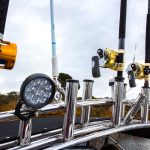
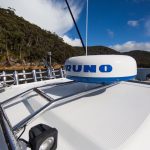
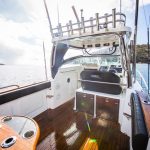
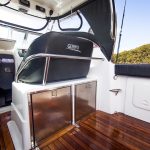
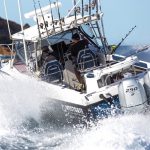
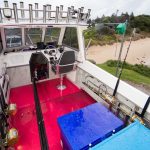
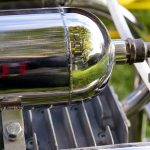
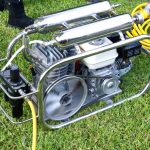
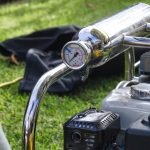
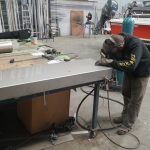
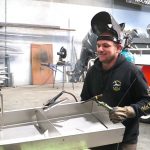
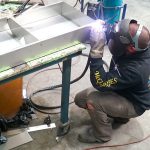
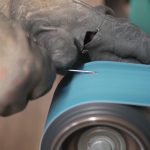
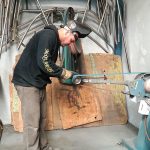
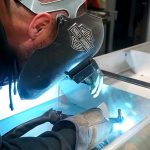
Recent Comments